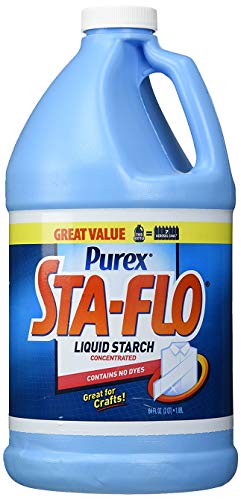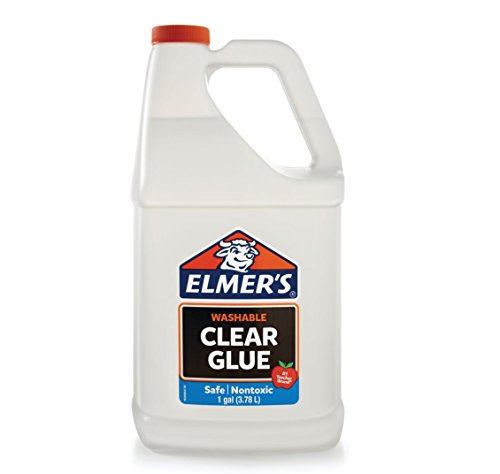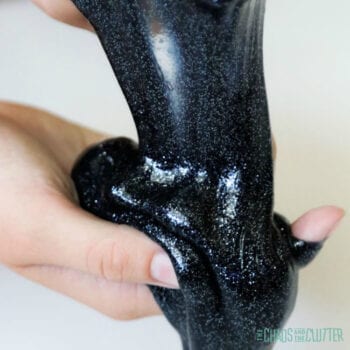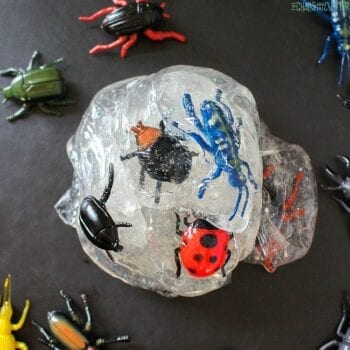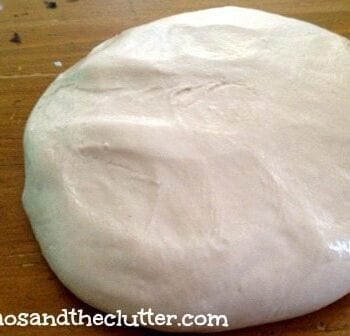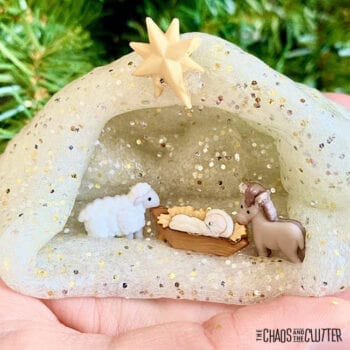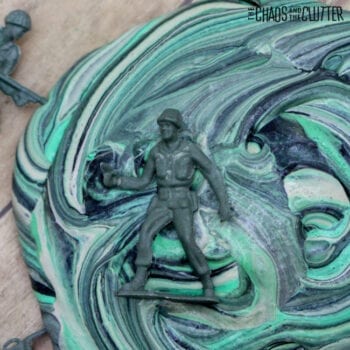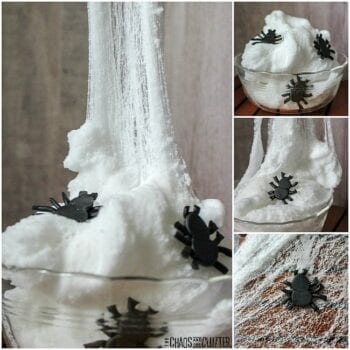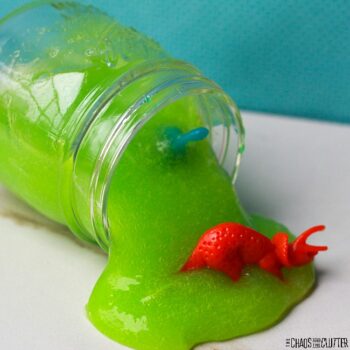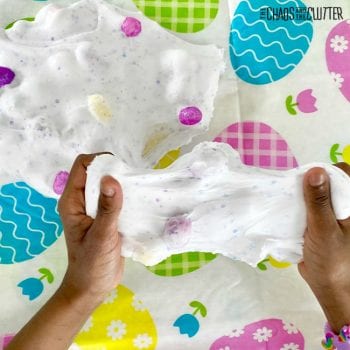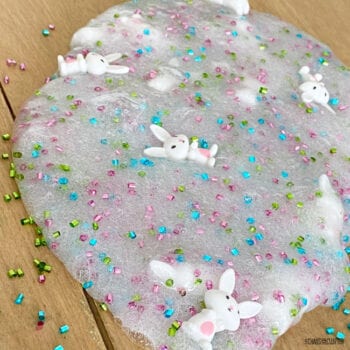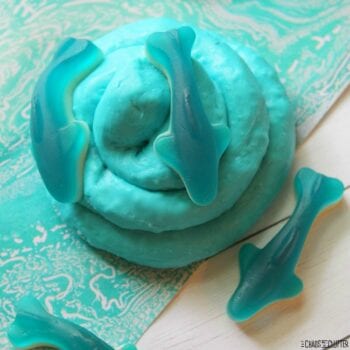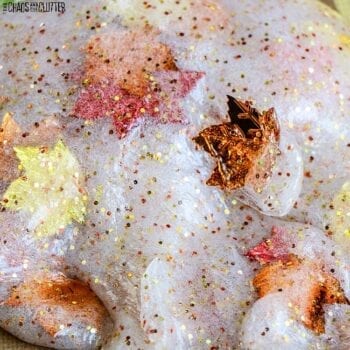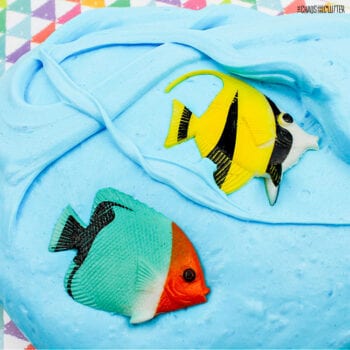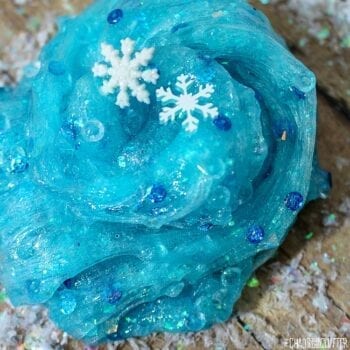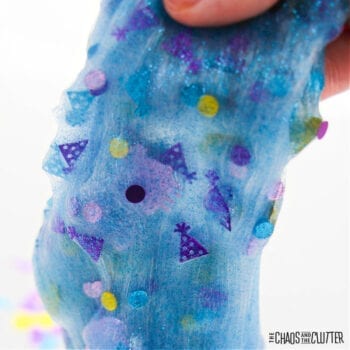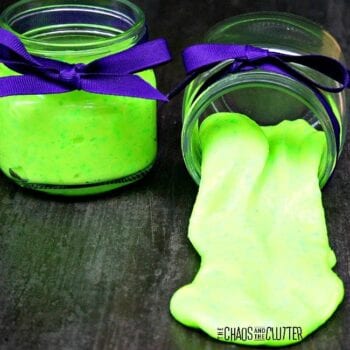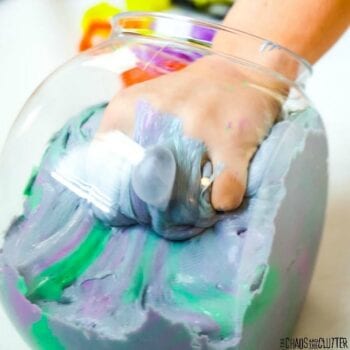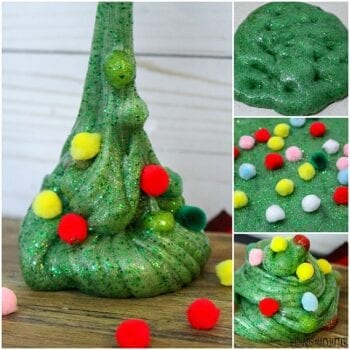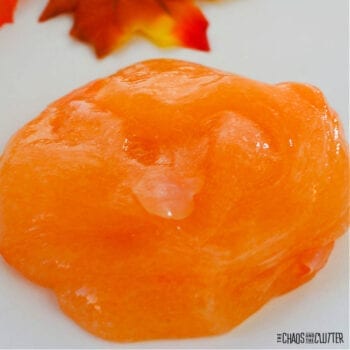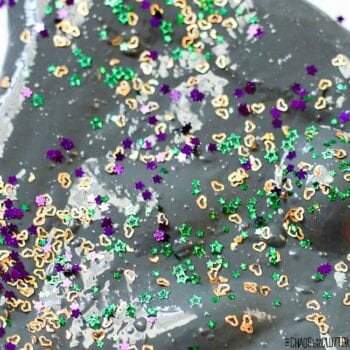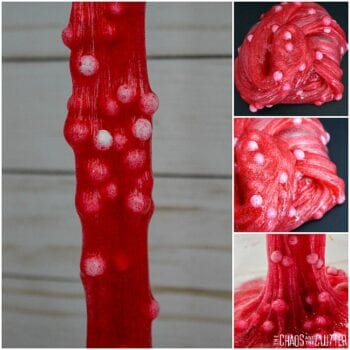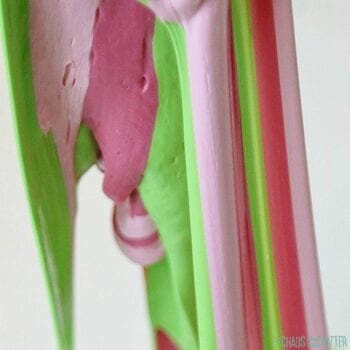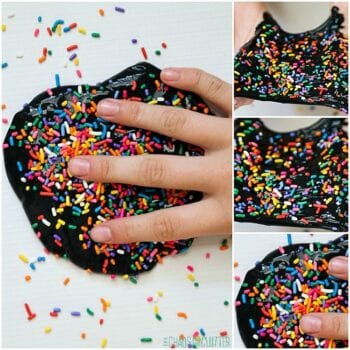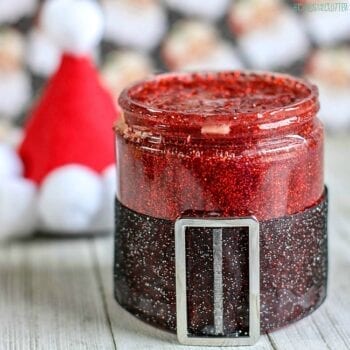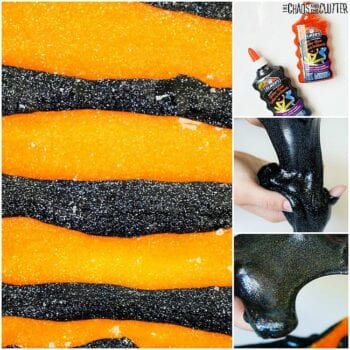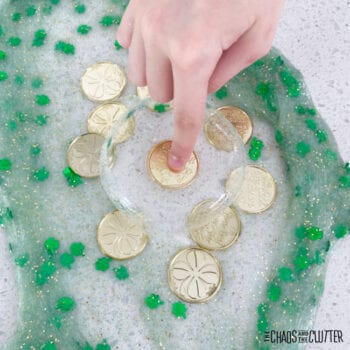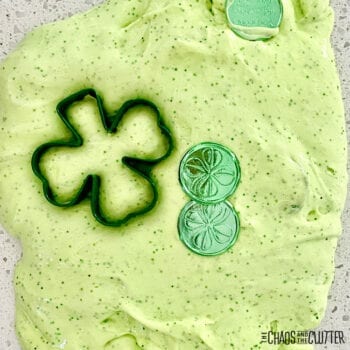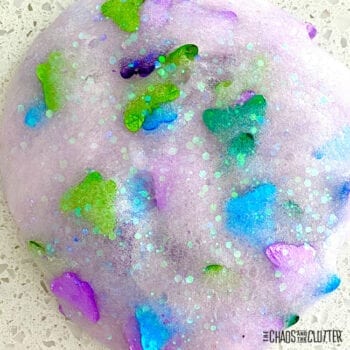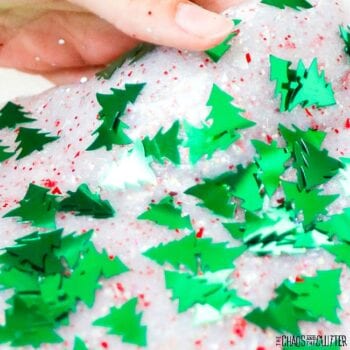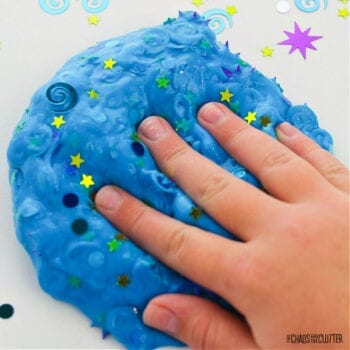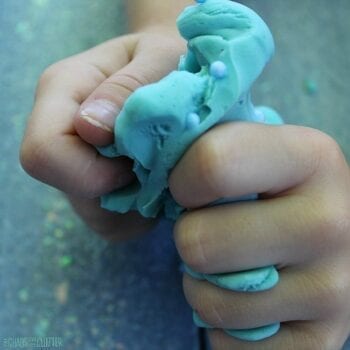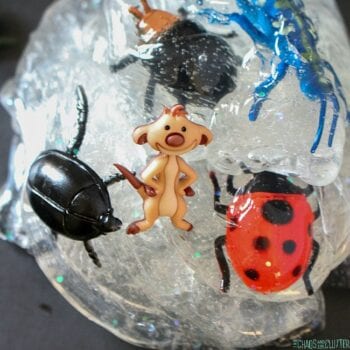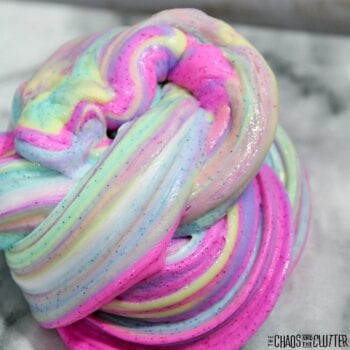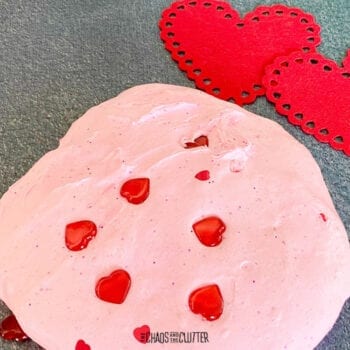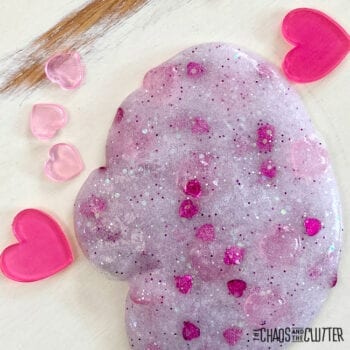Have you ever wondered how to make slime or are you looking for new ways to make it? Making slime is one of my kids’ favourite things to do. They could sit at the table for hours and play with it. If you think there is just one way to make slime, you’re wrong. There are multiple ways to make it and just as many ways to play with it! 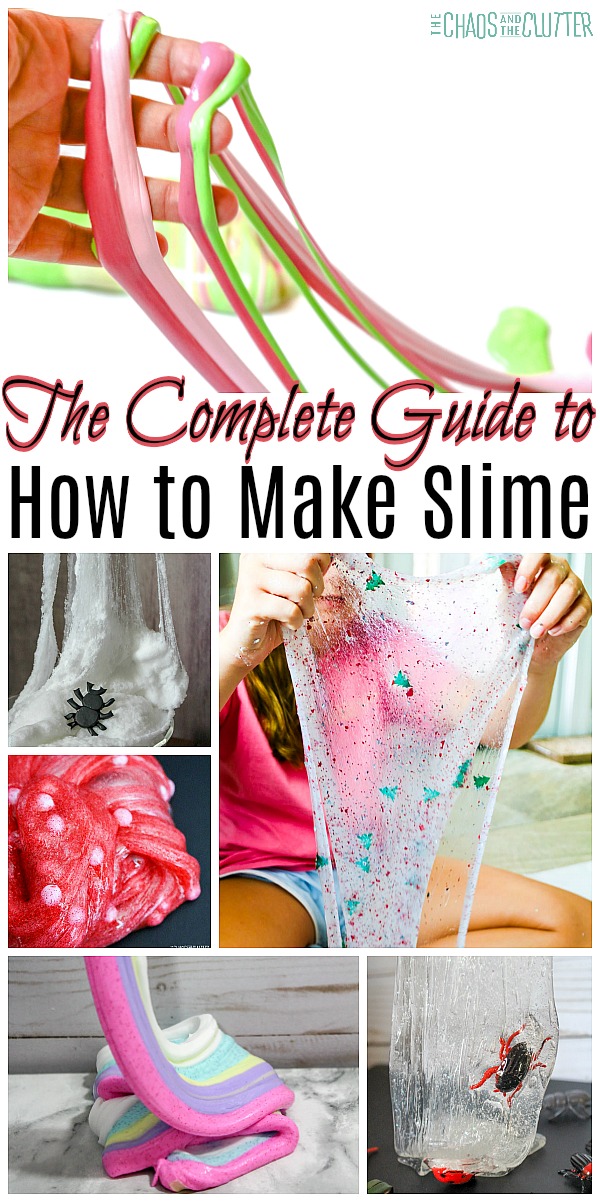
How to Make Slime Not Sticky
Once you’ve made your slime, you don’t want it to be sticky. You don’t want it sticking to your table, hands, and everything else. Once slime sticks, it certainly is hard to unstick!
Knead the Slime
One way to get rid of the stickiness is to knead it. Think about flour and how when you knead it, it makes it less sticky. The same thing goes with slime.
Small Amount of Baby Oil
If you’re looking to unstick the slime, then a tiny bit of baby oil will do the trick. You don’t want it slime to get super oily though. Keep this in mind as you add the baby oil to the slime. One drop at a time.
Drop or two of Contact Solution
If you’re using a recipe that uses contact solution and it’s still too sticky, you can add a drop or two more of contact solution.
How to Make Slime Stretchy
Has your slime become a blob that just sits there and doesn’t do anything? Slime is a lot more fun when it’s stretchy! If you’re wondering how to make your slime stretchy again, it’s time to follow these tips.
Hot top water
When it comes to making slime stretchy, hot tap water can do the trick. Just soak the slime in the hot tap water if it’s become too hard. This will breathe new life into it.
Small amount of lotion
Have hard slime that doesn’t stretch? Consider a small amount of lotion in the slime. A really small amount of lotion does the trick, so don’t add much more than that.
Take the time to move it around and see if it stretches. 
How to Ensure Your Slime is Not Runny
If your slime is runny, that is no fun! There are actually ways in which you can make slime not so runny. One of those tips is to add in a thickening agent.
For example, runny slime may need liquid glue to be added to it or a small amount of borax. Depending on what slime recipe you used, this will determine what you add to it to make it not runny.
Also, keep in mind that it does take some trial and error. Start with small amounts to see if this helps.
Classic Slime Recipe
What is considered a classic slime recipe is one that uses borax and glue. There are many ways to make the recipes more exciting by adding in glitter, confetti, or like the instant snow in the unique recipe below.
Slime Without Borax
Don’t have borax on hand? No worries! You can totally make slime without borax, you just need to know how. Borax is a thickening agent. So in order to create a slime without it, you’ll need to use another thickening agent.
Thickening agents out there are things that contain boric acid, sodium borate, or borax. Some of these products are liquid starch and eye drops! You’ll need to check the ingredient list to be sure they have one of those materials listed. They both work great for helping to make slime.
Other ways to make slime without borax include making it with shampoo or making edible slime.
Making Slime with Shampoo
If you have shampoo on hand, it can be the magic ingredient. Here are the steps for making slime with shampoo:
- You will need a ½ cup of shampoo and a ¼ of a cup of cornstarch in a bowl.
- You will want to mix this mixture up very well.
- From there, you’ll add a teaspoon of water and stir. Slowly add in five more teaspoons of water.
- To make the slime usable, you’ll want to knead the slime for about 5 minutes.
If the slime is too hard, you’ll want to add a little bit of water. If it’s too runny, you’ll want to add a little more cornstarch.
Making Slime with Contact Solution
Do you have contact solution on hand? It can be a perfect ingredient in making slime. You can look at contact solution as a slime activator.
To make contact solution slime, you’ll need a bottle of Elmer’s glue, baking soda, and contact solution, plus water if you like the slime a little stretcher. You can find an exact recipe for it here.
Not everyone wants to use their contact solution for this, but if you do, this recipe works great. 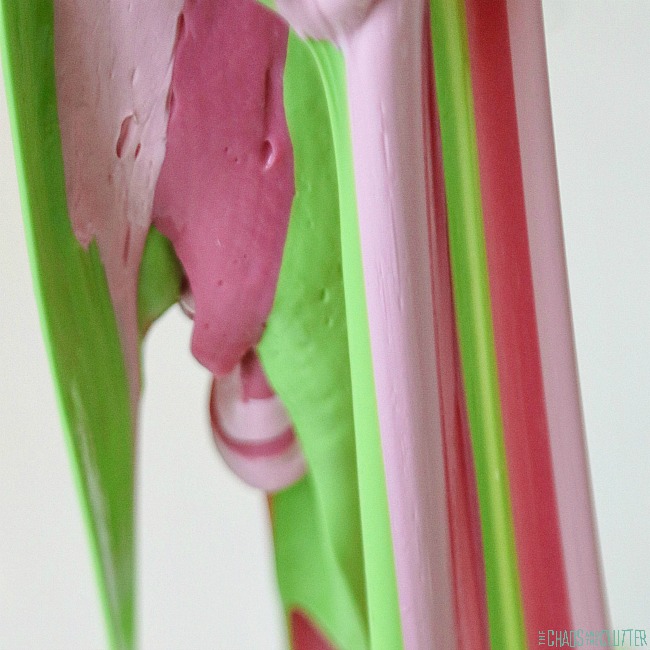
How to Make Fluffy Slime
Making your own fluffy slime isn’t as hard as it may seem. Who doesn’t love playing with beautiful and big fluffy slime?! The secret?
FOAM SHAVING CREAM!
YUP. I love that shaving cream is so cheap too! You can easily add foam shaving cream to the recipe and from there you can have some fun slime on your hands. I pick mine up from the dollar store. You can buy it in different scents which then results in a scented slime.
Making it scented is a great way to incorporate the olfactory sense into this sensory play.
Edible Slime
One of the latest trends is slime that is taste safe or edible. This Edible Shark Fluffy Slime is our favourite. There are many other edible slime recipes you can make that use ingredients such as pudding, candy, marshmallow fluff, icing, and Jello. 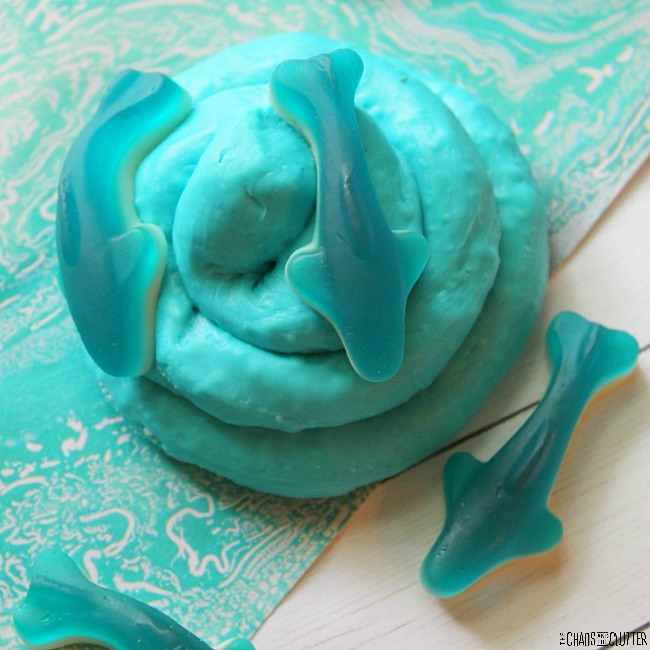
Ensuring that Slime is Safe
When you’re making sensory play recipes with your kids, you need to make sure that they are safe. One of the rules to making slime safe is to make sure your kids don’t eat it.
There are ingredients in typical slime that don’t make it safe to eat. Kids who have sensitive skin can also react to it when it comes in contact with their skin. You can instead use an edible recipe which will be safer for the skin and takes away the worry of toxicity.
If your kids have sensitive skin, they can also wear clothes and gloves while they make it and play with it.
You can read more important safety tips here.
Slime Ingredients
There are many different ingredients that can be used to make slime. These are some of the most common:
Styrofoam Balls for Slime Liquid Starch
Liquid Starch Elmer’s Liquid School Glue, Clear
Elmer’s Liquid School Glue, Clear Elmer’s Liquid School Glue, White
Elmer’s Liquid School Glue, White Saline Solution
Saline Solution Shaving Cream
Shaving Cream Holographic Chunky Glitter Sequins
Holographic Chunky Glitter Sequins
Why make slime?
Not only is slime a cool science lesson in chemistry, it is great for providing sensory input and it is good as a calming tool. For kids (or adults) who are struggling with anxiety, it provides a stress reducing effect. It can be used like a stress ball, but that’s not the only way that it is calming.
Slime engages both the visual, tactile, and proprioceptive sensory systems. Proprioception (also sometimes called heavy work) is very effective in calming as it provides much needed feedback to the body.
Depending on the type of recipe you use, there may also be other sensory systems such as olfactory (smell) engaged with this type of sensory play as well. You can find some fun ways to play with your slime here.
Our Favourite Slime Recipes
Do you enjoy making slime? What’s your favourite thing about it?
Looking for more great sensory play recipes? Join us for a five day email series on Sensory Activities and Solutions and get a free sample of our Sensory Play Recipes eBook.

